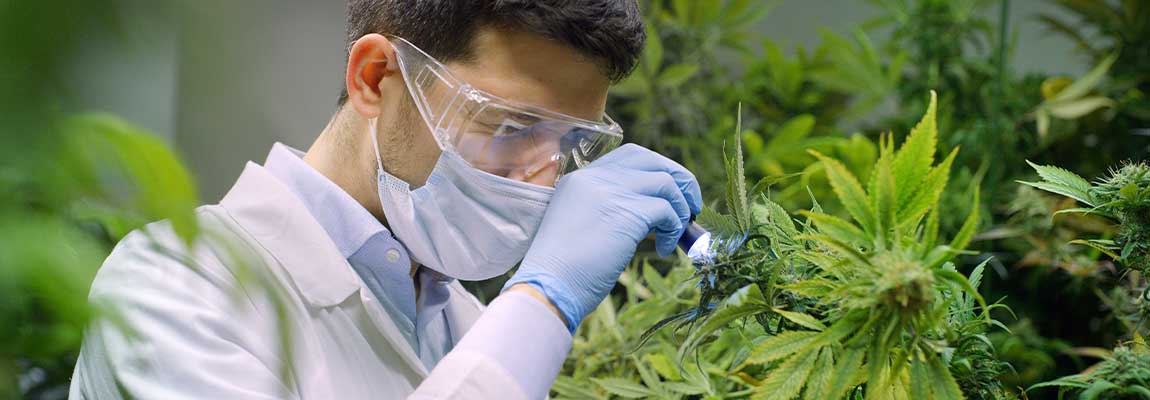
Hemp phenotyping with PhenoAIxpert HT
Hemp plants are of industrial (fiber production) and medical (use active ingredients like CBD, THC) interest and thus breeding optimized varieties is an important task. In any breeding process, not only genetics but similarly phenotypes need thorough analyses, and robust genotype-phenotype relations are crucial for successful varieties. Moreover phenotype analysis is important for any assessment of environmental impacts.
In a pilot study, we compared three hemp plants using a LemnaTec PhenoAIxpert HT system. The three plants differed in size and shape, and the corresponding imaging and image processing serves to demonstrate capabilities of LemnaTec technology for hemp- and cannabis- analyses. The plants were placed on the conveyor of the PhenoAIxpert HT and drove through the imaging cabinet equipped with industry-grade RGB cameras looking horizontally and vertically at the plant. This resulted in three images per plant, one vertical top-down image and two horizontal images with 90° turning of the plant in between.

original images, geometrical factors, mask, and color analysis (from left to right)
Images were taken from above the plants and horizontally using the LemnaTec PhenoAIxpert HT system. Image processing using LemnaGrid software delivers many parameters that provide biological information.
Image processing was carried out with LemnaGrid software. With separating the plant from the background, pixels of the plant area give an indication of size. The area projection, here in combination of different views, is an indicator for the plant’s leaf area. Measuring convex hull, caliper length, and enclosing circle, information on length and width of the plant are provided. Beyond the area, length and width are important measures on the plant’s dimensions and serve to characterize the growth and biomass development.
For calculating the plant dimensions, we averaged the pixel values from the three images, i.e., the projected areas from the two horizontal side views and that from the vertical top view. The resulting average is taken as the relative size of the plant. The assessment of plant size reveals differences in biomass and growth between individual plants. In the example given in this pilot study, plant 2 had the largest area, followed by plant 1 while plant 3 was the smallest. This information type can be used in many application cases. In genetic studies, such information gives insight in genetic control of growth. When analyzing environment and plant management, growth reflects effects of climate and treatments. Morphological factors such as compactness describe properties of the plants’ bodies that can equally be influenced by genetics or environment.


The compactness factor indicates the stature of the plant – compact plants have less space between their leaves compared to plants with low compactness. Growing densely together might be an advantage when saving water is necessary, and it is favorable as it gives stability to the plant. However, low compactness gives more space for light shining in so that more leaf area can be illuminated. Thus, measuring the compactness factor is informative on the growth behavior. LemnaGrid software provides a range of geometric factors, e.g., the enclosing circle, which is indicative for height and diameter of the plants.

Enclosing circle and caliper length indicate the height and width of the plant. Plants 2 and 3 in the pilot study were similar, while plant 1 had lower values for enclosing circle and caliper length. The convex hull encloses the outer tips of the plant in an image. This factor can be informative on height, width, and leaf positioning. In the given example, plant 2 had the highest value for convex hull, meaning that this plant was the most spread-out individual. Again, the morphological factors can provide insight in effects of environment and genetics when analyzing plant growth and performance.
Plant leaves usually are green; however, the green has nuances depending on chlorophyll abundance and changes from green to other colors indicate stress and diseases. Thus, color analysis is a key step in phenotyping. In the example, all three plants were fully green, with a higher fraction of dark green in plant 2 and an elevated fraction of medium green in plant 3, both in comparison to plant 1. With the limited number of plants in the pilot test, no specific function could be linked to the colors, as no specific stresses or diseases were present.

